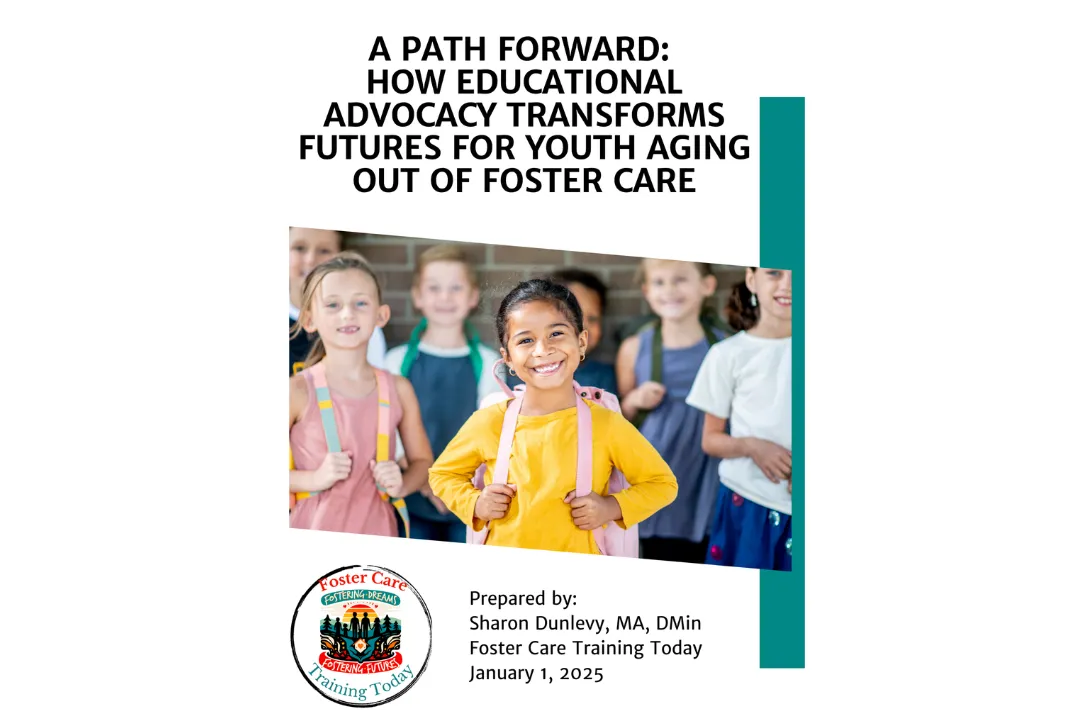
A Path Forward: How Educational Advocacy Transforms Futures for Youth Aging Out of Foster Care
The Problem
In 2021, over 390,000 children were in foster care in the U.S., with 20,000 aging out annually. Of those aging out:
Only 47% were reunified with family.
25% will not graduate high school.
25% will experience homelessness.
20% will be incarcerated by age 21.
23% will be parents by the age of 21
Only 57% will be employed either full- or part-time by the age of 21.
Only 3-12% will ever earn a college degree (associate or bachelor).
Former foster youth are 1.5 to 2 times more likely to engage in substance use than the general population.
20% or more will experience mental health issues into adulthood.
20-40% of former foster youth have their children enter the child welfare system at some point.
These statistics demonstrate the dire need for interventions that address both educational instability and the transition to adulthood for foster youth. Currently, the social cost of these adverse outcomes is estimated at $300,000 per foster alumni, totaling $6 billion annually (Annie E. Casey Foundation, 2024).
Improving educational outcomes could significantly change these statistics.
Improving Educational Outcomes
The Every Student Succeeds Act (ESSA) of 2016 acknowledged that educational instability was a significant challenge for students in foster care (SFCs). However, ESSA has not yet yielded substantial improvements, primarily due to inconsistent data reporting, lack of comprehensive measures, and limited training for foster care professionals.
ESSA’s Weaknesses: While it addressed some barriers, such as out-of-district transportation, it does not mandate comprehensive reporting on the unique needs of SFCs, like transportation to schools of origin or specific achievement metrics like college readiness.
COVID-19 Impact: The pandemic compounded existing issues by delaying educational assessments and exacerbating the learning gap.
Training Gaps: Foster parents and school personnel lack training on the educational rights and trauma needs of SFCs, leading to underutilized services and unsupported transitions. In addition to ESSA, students in foster care also qualify for services under the Individuals with Disabilities Education Act (IDEA) and the Family First Prevention Services Act (Family First), yet, according to the Annie E. Casey Foundation (2024) these services are not being accessed to the full degree possible to support SFCs.
It is time to address these gaps before more SFCs leave care unprepared to live independently
Recommendations
To improve educational outcomes for youth aging out of foster care, we recommend the following actions:
Strengthen Data Reporting: Develop a national database to track educational progress for SFCs, ensuring consistency and accountability across states.
Expand Training: Implement comprehensive training for foster parents and caseworkers on the educational rights of SFCs, as well as trauma-informed practices for educators and school staff.
Maximize Use of Family First Services: Encourage greater utilization of academic support, mentoring, and financial assistance available through Family First, which is underused but critical for a smoother transition to adulthood.
Collaborative Advocacy: Foster collaboration between child welfare, education, and community organizations to ensure that SFCs have the holistic support needed to thrive academically and socially.
By strengthening the educational advocacy system and ensuring collaboration between child welfare and education departments, we can better support youth aging out of foster care, equipping them with the tools needed for independent living and long-term success. With these changes, we can transform their futures and significantly reduce the social costs tied to foster care outcomes.
Through collaboration, we can empower SFCs to thrive as successful adults
Become an Advocate for Children in Foster Care
You don’t have to be a foster parent to help change the lives of children in foster care. To learn how, contact Sharon Dunlevy at [email protected]. Together, we can make a lasting difference in the lives of foster youth, equipping them with the tools they need to thrive.
